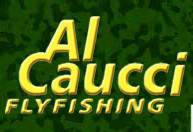
![]()
Trips
Montana
Missouri
SW
Montana
Clark Fork & Bitterroot
Bahamas
Andros Island
Upper Delaware
Other Destinations
Alaska
New Zealand
Argentina
Chile
![]()
News
![]()
River Updates
Hatch
Chart
![]()
Campground
![]()
Tips
Articles
ACFF
Photo Gallery
![]()
Al Caucci's Biography
Testimonials
![]()
Contact Us
Home
![]()
Your fishing logs at Ecolure
![]()
Friends of the
Upper
Delaware
![]()
1250 Winterdale Road
Starlight, PA, 18461
Phone : 1 ( 570 ) 635 - 5897
email : alcaucci@hancock.net

|
||||||
|
Paraleps By Al Caucci Just before the Hendricksons start, you can expect heavy hatches of Paraleptophlebia adoptiva. They will hatch when the water temperatures are approximately 50 degrees F. for a few days. Hatches start as early as 11:00 A.M. and continue through most of the afternoon, with the best activity occurring during the warmest part of the day.
There are over 30 species of Paraleptophlebia, most inhabiting the rivers of the Rockies and west coast. The most significant species in the East and Midwest are P. adoptiva, P. mollis and P. debilis. In the Rockies and on the west coast, it's P. debilis, P. bicornuta and P. packi. P. adoptiva is a key hatch in the East and Midwest, such as on Pocono, Catskill and Adirondack streams, as well as in the rivers of northern Wisconsin and Michigan, including the Upper Peninsula. I have experienced excellent Paralep action during the last two weeks of April on the Upper Delaware River, just prior to the Hendrickson (Ephemerella) hatch. Once the Hendricksons get going, the trout may lose their interest for the smaller Paraleps. Paralep nymphs prefer slow to moderate water, and their streamlined appearance is very similar to those of the Baetis nymph. They are most easily recognized by their size (6 to 10mm long) and their long and delicate "forked" gills.
Comparaduns are the imitations of choice for the duns, especially in the early season when the body of the dun floats in the film for a long time. On rivers like the West Branch of the Delaware, where their numbers are extremely prolific, you may have to resort to a Compara-emerger with trailing shuck. CDC emergers are also effective and easy to see, but less durable. All patterns should be tied with thin bodies, like the natural, -a thickly-dubbed body can be a definite turnoff with selective, wild trout. Drag free drifts are also a necessity! The spinner is usually not as important during cool weather, but can be very important when the air temperature warms up.
|
||||||